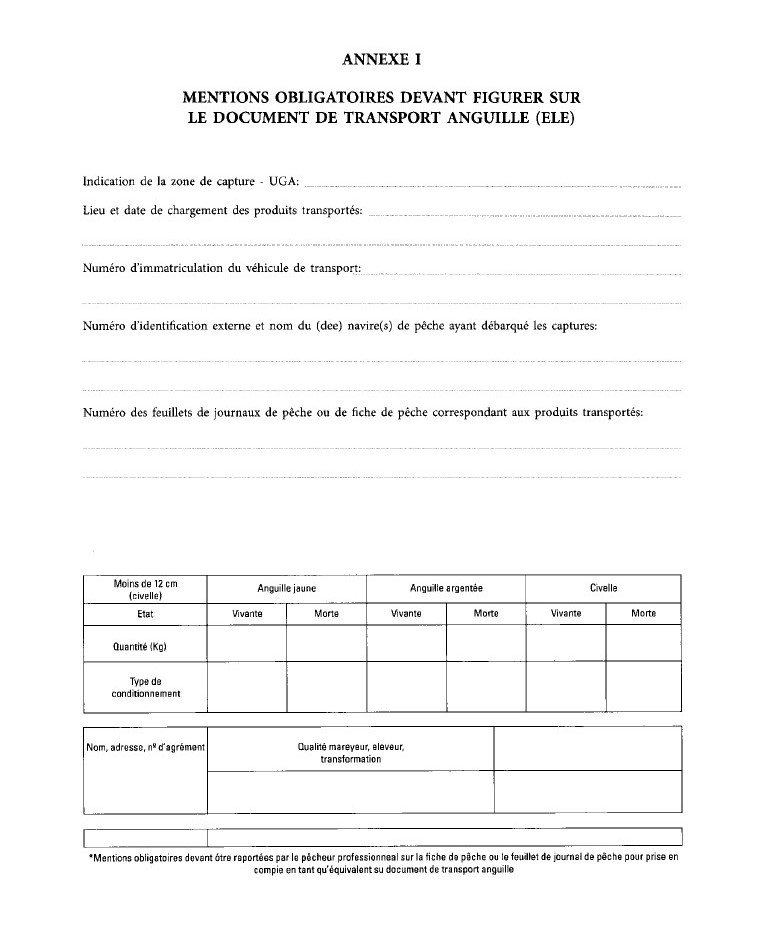Transport and Fish Trade dockets
Once the glass eels arrive at the fish merchant, they are drained and weighed accurately. A delivery note is then issued by the fish merchant. This delivery note must indicate the following information: number(s) of the fishing form(s), quantity of glass eels sold and on which quota: consumption or restocking and the price per kg after agreement with the fisherman.

The fisherman then issues a numbered invoice to be paid at the end of the week. This invoice includes the quantity of glass eels sold (to the nearest gram) and the price per kg; the contact details of the fisherman and the eel licence number and the boat registration number); the fishing area: sea or river and the Eel Management Unit harvested; the number(s) of the fishing form(s) corresponding to the catch sold and finally whether the glass eel landed is taken from the restocking or consumption quota.
A copy of all this information and documentation must be kept by the fish trader so that he can prove that the glass eel stored in his tanks comes from fishing carried out by a licensed professional fisherman and from a consumption or restocking quota that has not been exhausted. The stock thus kept in the tanks will then be counted (weighed) until it is sold by the fish trader with an admitted loss of 10% (loss of weight due to the slimming of the glass eel during its pigmentation and non-feeding phase) and the mortality of the glass eels stored (mortality which will have to be proven).

